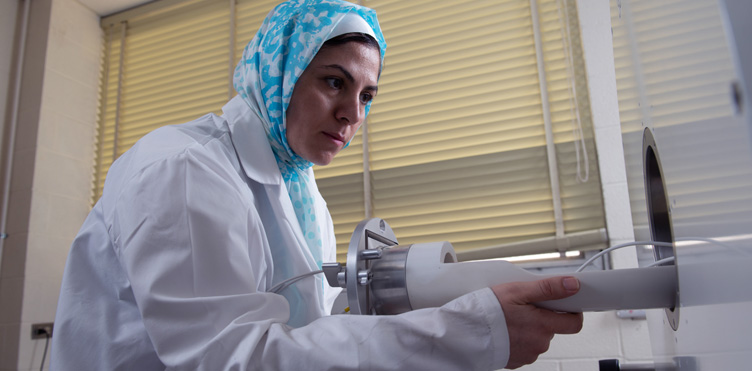Physics Research

We conduct research in four major areas:
- Atmospheric and Space Physics
- Atomic and Molecular Laser Spectroscopy
- Magnetic Resonance Imaging
-
Quantum Sensing and Ultra-Cold Matter
Atmospheric and space physics
We investigate phenomena occurring in the atmospheres and plasmas associated with the Earth, Sun and Solar system.
The familiar characteristics of our home planet are the result of subtle balances between inputs from outside and the properties of our planet itself.
The Space and Atmospheric Sciences group focuses on the study of coupling between Solar Wind - Magnetosphere - Ionosphere and the near space environment and the Earth's middle and upper atmosphere.
Experimental work, data analysis, modeling and theoretical studies of aspects of this problem are being undertaken here and so there is a broad base of expertise to support students interested in advanced degrees related to this area of study.
Current activities include:
- Development of ground-based radars and optical interferometers
- development of an observatory near Fredericton
- development of satellite instrumentation for measurements of atmospheric dynamics
- analysis of satellite data sets
- participation in national and international observing networks
-
investigation of fundamental insights into the behaviour of plasmas similar to those appearing in the Earth's near-space environment.
Space and Atmospheric Research group is also involved with a number of satellite missions of Canadian and other Space Agencies and collaborates with various national and international universities and institutes
The main project of the group is the Canadian High Arctic Ionospheric Network (CHAIN).
Our team:
- Dr. A. M. Hamza
- Dr. P. T. Jayachandran
- Dr. William Ward
Atomic and molecular laser spectroscopy
UNB celebrates nearly 50 years of active research in atomic and molecular physics.
Our work spans a wide spectrum of activities, including:
- extremely high-precision calculation of atomic properties and structure (Dr. Z.-C. Yan)
- experimental spectroscopy on a wide variety of molecules using many novel techniques
- electronic spectroscopy on metal-bearing radicals (Dr. A. Adam and Dr. C. Linton)
- carbon-based radicals of atmospheric and astrophysical interest (Dr. D. Tokaryk)
- microwave and infrared studies on larger molecules of atmospheric, environmental and biological relevance, with particular interest in their torsional and large-amplitude motions (Dr. R. Lees)
Our spectroscopic laboratories are very well equipped with a wide variety of lasers:
- infrared
- ultraviolet
- a Fourier transform spectrometer
-
a number of unique sources suitable for creating the molecules of interest
Our activities are international, with collaborations in Europe, the United States of America, Asia and Canada.
Our members are among the first to conduct spectroscopy experiments on the new Canadian Light Source, a synchrotron based at the University of Saskatchewan.
The atomic and molecular scientists at UNB are members of the Centre for Laser, Atomic, and Molecular Sciences (CLAMS), one of the largest of its kind in North America, which involves twelve scientists in both Chemistry and Physics.
Magnetic resonance imaging (MRI)
We are the only material science MRI lab in Canada and the only university-based lab of its type in North America. As leaders in many aspects of material science MRI, academic and industrial research labs are adopting our ideas and techniques.
Our MRI Centre invented a family of new MRI methods which permit the visualization of structures in vivo and in a large range of materials such as:
- concrete
- polymers
- composites
- foods
- microporous solids
The successful application of these new techniques with hardware and software innovations has opened entirely new vistas in material science research.
Quantum sensing and ultra-cold matter
In 2021, we established a laboratory for Quantum Sensing and Ultracold Matter (QSUM). This lab takes advantage of existing infrastructure at UNB to realize several new experiments with laser-cooled atoms. Our activities focus on both fundamental and applied aspects of quantum sensors based on matter-wave interferometry, including:
- ultra-stable lasers
- new atomic diffraction techniques
- large momentum transfer atom optics
- high-accuracy measurements of gravitational and magnetic fields
- multi-axis inertial sensing
- positioning, navigation and timing
Working with cold-atom-based instruments presents several unique opportunities for students to learn modern techniques in both engineering and experimental physics. Some examples include designing of modern laser systems, developing low-noise electronics, assembling ultra-high vacuum systems, constructing opto-mechanical hardware, writing instrument control and data acquisition software, advanced image analysis and numerical modelling of quantum phenomena.
